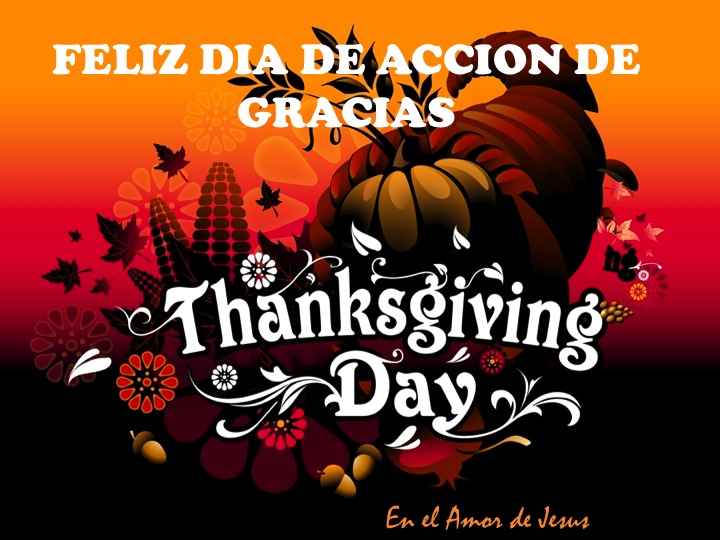Thanksgiving, known as "Día de Acción de Gracias" in Spanish, is a time for families and friends to gather, reflect, and give thanks for the blessings in their lives. This cherished holiday, celebrated primarily in the United States and Canada, has its roots in historical feasts shared between Native Americans and early European settlers. Today, it has evolved into a festive occasion marked by delicious meals, heartfelt gratitude, and a sense of community. In this article, we will explore the significance of Día de Acción de Gracias, its traditions, and how you can celebrate it meaningfully.
As the holiday approaches, excitement fills the air. People begin to plan their gatherings, shop for ingredients, and decorate their homes. It's a time when the aroma of roasting turkey fills kitchens, and tables are adorned with a cornucopia of seasonal dishes. But beyond the sumptuous feasts, Thanksgiving is about expressing gratitude and cherishing loved ones. This article delves into various aspects of this beautiful holiday, offering insights and ideas to enhance your Thanksgiving experience.
Join us as we uncover the history, traditions, and modern-day celebrations of Día de Acción de Gracias. Whether you're hosting a grand feast or celebrating in a more intimate setting, understanding the essence of this holiday will make your celebration even more special. Let’s get started on this journey of gratitude and joy!
Table of Contents
- The History of Día de Acción de Gracias
- Traditional Thanksgiving Foods and Their Meanings
- How to Celebrate Thanksgiving in Style
- The Importance of Gratitude
- Fun Thanksgiving Activities for Families
- Thanksgiving Around the World
- Conclusion
- Sources
The History of Día de Acción de Gracias
The origins of Thanksgiving can be traced back to the early 17th century when the Pilgrims, seeking religious freedom, settled in North America. After a challenging first year, they celebrated their successful harvest with a feast in 1621, inviting the Wampanoag tribe to join them. This gathering is often considered the first Thanksgiving, symbolizing cooperation and gratitude.
Over the years, Thanksgiving has evolved, with various cultures adding their unique flavors and customs. In 1863, President Abraham Lincoln proclaimed Thanksgiving a national holiday, solidifying its place in American culture. Today, it is celebrated on the fourth Thursday in November in the United States and the second Monday in October in Canada.
Traditional Thanksgiving Foods and Their Meanings
Food plays a central role in Thanksgiving celebrations. Here are some traditional dishes and their significance:
- Turkey: The centerpiece of most Thanksgiving meals, the turkey symbolizes abundance and prosperity.
- Stuffing: Often made from bread, herbs, and vegetables, stuffing represents the idea of filling our lives with love and gratitude.
- Cranberry Sauce: The tartness of cranberries balances the richness of the turkey, symbolizing the importance of balance in life.
- Pumpkin Pie: A sweet ending to the meal, pumpkin pie represents the harvest and the warmth of family gatherings.
How to Celebrate Thanksgiving in Style
Celebrating Día de Acción de Gracias can be as simple or elaborate as you wish. Here are some tips for a memorable celebration:
1. Plan a Festive Menu
Gather your favorite recipes and plan a menu that reflects your family's traditions. Consider including both classic dishes and new recipes to keep things exciting. Don't forget to accommodate guests with dietary restrictions!
2. Create a Warm Atmosphere
Decorate your home with autumn-themed decor, such as pumpkins, leaves, and candles. A beautifully set table enhances the dining experience and creates a welcoming ambiance.
The Importance of Gratitude
Thanksgiving is not just about the food; it's a time to reflect on what we are grateful for. Practicing gratitude can have profound effects on our mental and emotional well-being. Here are some ways to incorporate thankfulness into your celebration:
- Gratitude Jar: Encourage guests to write down what they are thankful for and place it in a jar. Read them aloud during the meal.
- Sharing Stories: Take turns sharing personal stories of gratitude, fostering a deeper connection among guests.
Fun Thanksgiving Activities for Families
Engaging activities can make Thanksgiving even more enjoyable. Here are some ideas:
- Thanksgiving Crafts: Create festive decorations or handmade cards to share with loved ones.
- Outdoor Games: Organize games like touch football or a scavenger hunt to keep everyone active and entertained.
Thanksgiving Around the World
While Thanksgiving is a uniquely American holiday, other cultures celebrate similar harvest festivals. For example:
- Canada: Celebrates Thanksgiving on the second Monday in October, with similar customs and foods.
- Germany: Hosts Erntedankfest, a harvest festival where people give thanks for the bounty of the earth.
Conclusion
Día de Acción de Gracias is a beautiful holiday that brings people together to celebrate gratitude, family, and friendship. Whether you are gathering around a table filled with traditional dishes or engaging in fun activities, the essence of Thanksgiving lies in appreciating the moments we share with loved ones. This year, take the time to reflect on your blessings and create lasting memories.
We encourage you to leave a comment below sharing your favorite Thanksgiving traditions, or feel free to share this article with friends and family. Happy Thanksgiving!
Sources
For further reading and reference, here are some trusted sources:




